Lumia 640 XL review: a colossal business bargain
Microsoft's 5.7in Lumia 640 XL behemoth hits the mark with slick functionality at a cracking price
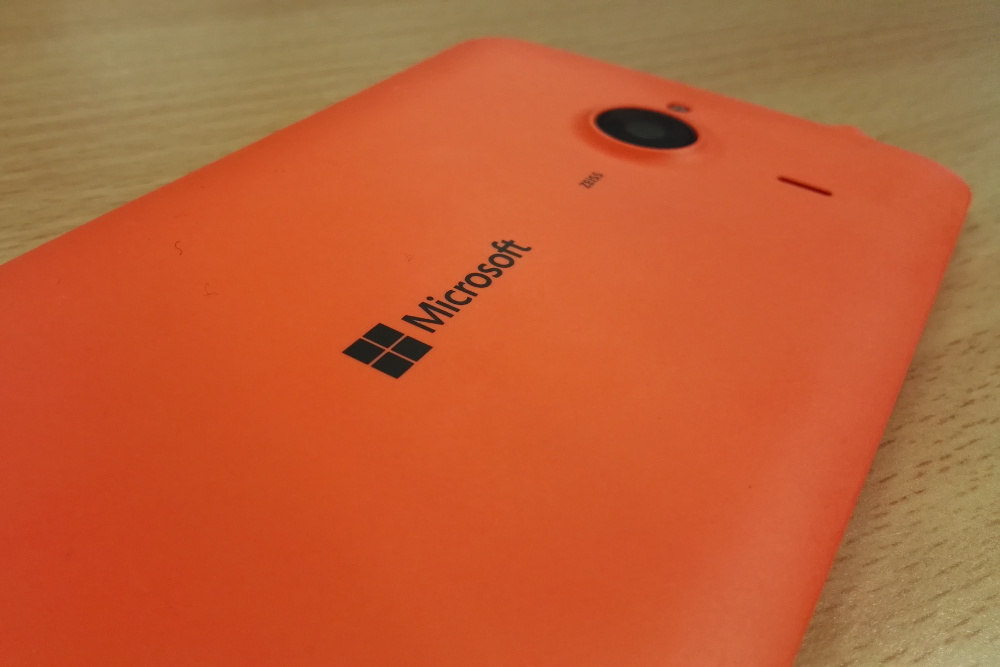
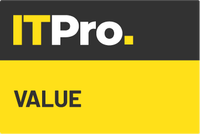
For business users, the Lumia 640 XL is a fantastic smartphone. It has outstanding integration with the Office app family, a brace of features geared towards enterprise use, will be part of the eventual Windows Phone 10 rollout, and to top it all off, it's set at a pleasingly inexpensive price.
-
+
Great value; Office 365 subscription and OneDrive allowance included; Excellent integration with Windows ecosystem
-
-
Comparative lack of apps; large screen can be unwieldy

With the launch of Windows 10 just around the corner, Microsoft is repeating its "cloud first, mobile first" mantra, and this includes beefing up its smartphone lineup. The Lumia 640 and 640 XL marks the company's latest attempt to secure the lucrative enterprise smartphone sector.
Lumia 640 XL:design
The Lumia range has traditionally stuck to a similar design, but for this device it's not necessarily a good thing though.Much like the HP Stream 11, Microsoft phones tend to suffer from a bit of an image problem, as the rounded, brightly-coloured plastic shells mean they look more like consumer devices - or dare we say it, a child's first smartphone - than a handset worthy of a CEO's pocket.
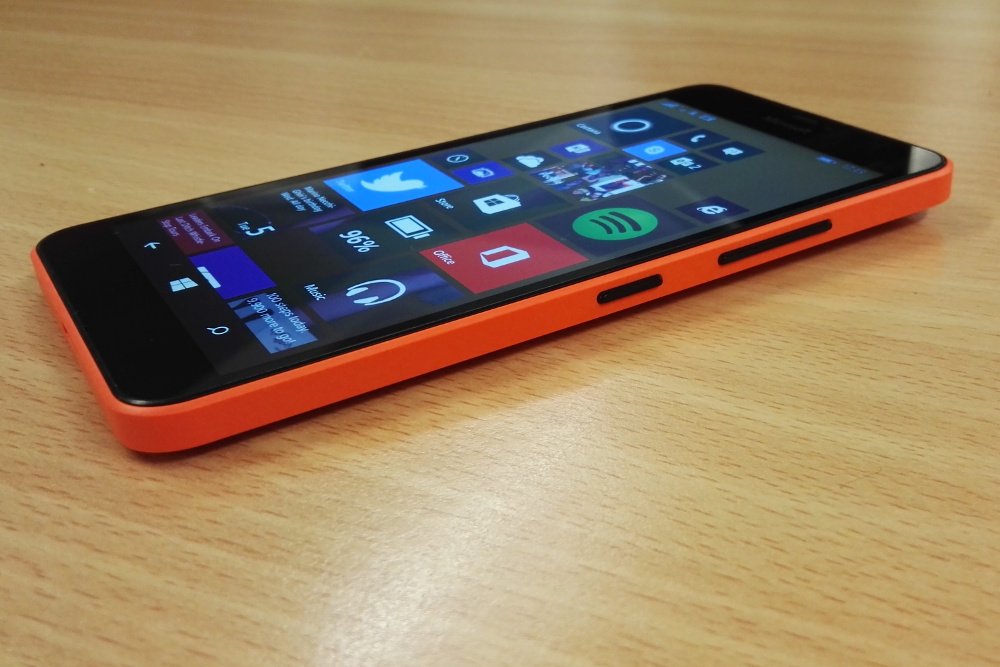
Thankfully, the build quality has been stepped up several notches for the 640 XL. The plastic backing is now finished with a matte coating, and it's also available in black or white for those that don't quite fancy garish orange.
The 640 XL also feels a lot less flimsy than previous iterations. Despite the plastic, the device has a premium feel, and looks a lot sleeker than we're used to seeing from the Lumia range.
The more upmarket construction means an increase in weight and profile, however. The device is 9mm thick, with a fair amount of heft to it around 170g. That said, with the recent trend for wafer-thin handsets, it's nice to see something that doesn't feel like it's going to break the first time you drop it.
Its dimensions mean the Lumia 640 XL is at the very limit of pocketable size. The 5.7in screen is a behemoth, and borders on unusable in a few ways.Typing one handed is almost impossible, and is going to be an exercise in painful, thumb-stretching frustration for all but the most truckasuarus-handed giants. It even feels faintly ridiculous to make calls on.
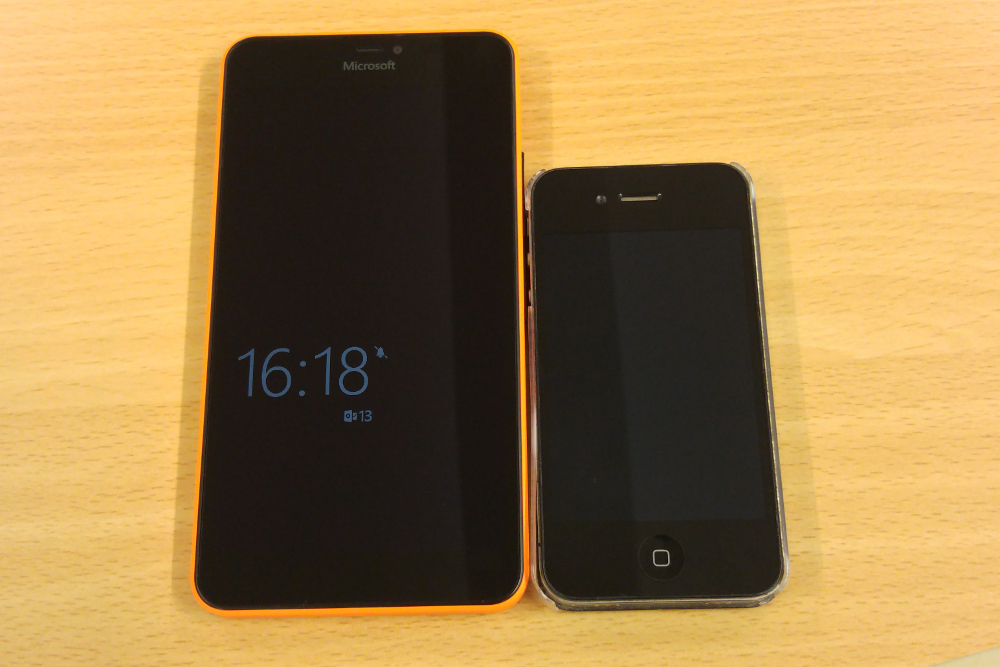
It's a problem given most app developers' habit of putting home or options buttons in the top corners of the screen. Much like the iPhone 6 or the Huawei P8, the 640 XL could benefit from some reachability features.
Sign up today and you will receive a free copy of our Future Focus 2025 report - the leading guidance on AI, cybersecurity and other IT challenges as per 700+ senior executives
Lumia 640 XL: display
Rather than following the route of most of its rivals and aiming for expensive, top-quality screens, Microsoft has instead restrained itself to a 720p resolution. While hardware purists may turn their noses up at the comparatively lackluster screen specs, it's actually a bit of a cracker.
The ClearBlack IPS display has a decent contrast of 1066:1, with deep, rich blacks. The viewing angles are nice and wide too, and it looks great when displaying photos or viewing video.
With a pixel density of 259ppi, it's not the top of the heap on paper, but Microsoft's minimalist OS masks that very nicely, and the visuals are generally crisp and clear, with Corning's Gorilla Glass 3 ensuring it should resist damage if dropped.
The display requiers some user tweaking in order to reach its full potential. By default, the three brightness settings are low, mid and high, but even the high setting is only set to around half the device's maximum.
Tinker with the brightness profiles for a better experience. Crank the high profile setting up to maximum, and the 640 XL really shines, up to a brightness of 550cd/m2. You can also change the colour profile, which will modify the appearance of images to be more vibrant, cooler or colour-accurate, according to your tastes.
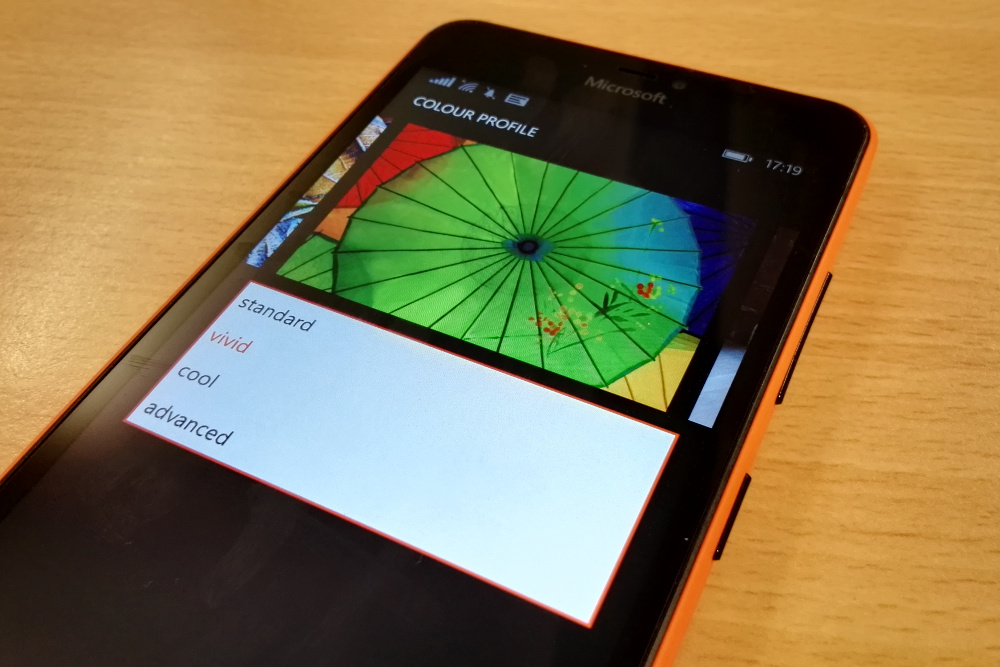
Lumia 640 XL:software
Windows Phone is something of a Marmite OS you either love it or you hate it. The 640 XL is a perfect example of why: the best aspects of Windows Phone shine here, with Office, OneDrive, OneNote and other Microsoft apps working well together as part of a cohesive package.
The People app works well to pull contacts' information from all your communication apps to create a central hub of everyone you know, saving bundles of time compared to swapping between various different communication tools.
However, all of the things that discourage consumers from adopting Microsoft's mobile platform are also present in full force. The home screen lacks functionality compared to Android's widget-rich system, and the Windows Store still lags miles behind the competition.
The essential apps are all present and correct: Facebook, Twitter and so on are there, and those that aren't usually have third-party clients to fill the gap. Less popular apps may be left out in the cold, however, and there's noticably less choice.
Microsoft has jumped on the Siri bandwagon with its own digital assistant: Cortana, better-known as a lead character in Xbox's Halo franchise. As with most of her competition, she'll perform internet searches for you, give you news and weather updates, and help you with directions, among other tasks.
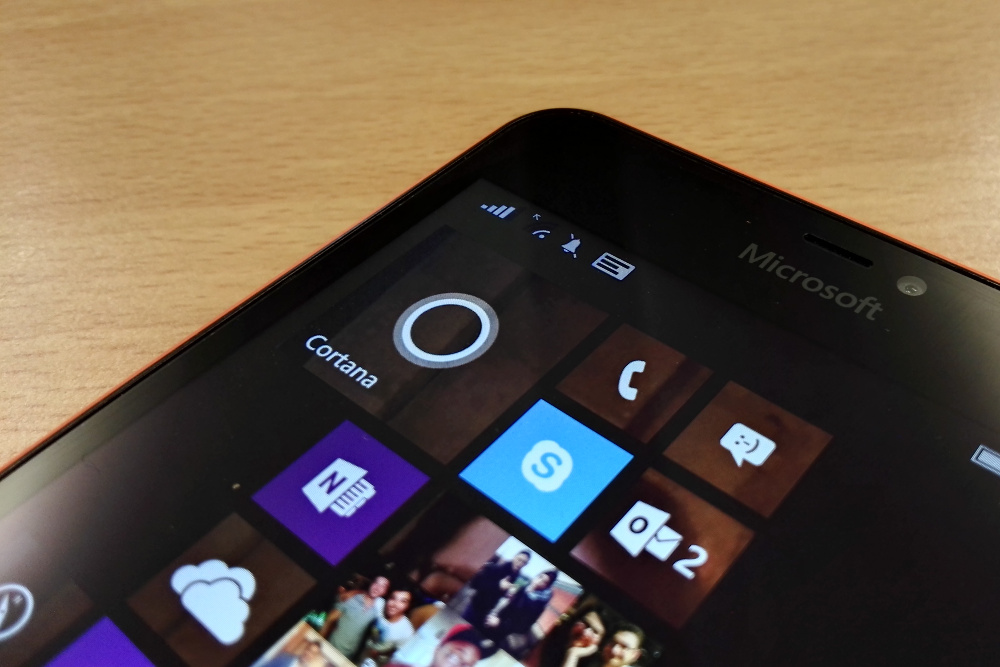
You can access Cortana by holding down the search button on the navigation bar, but we found that we didn't really bother most of the time. The basics web queries, nearby restaurants, note-taking, and so on were all handled capably, but more complicated operations can leave Cortana stumped, and she doesn't quite have Siri or Google Now's range of functions.
Document editing is arguably the lynchpin of any good business smartphone, and it's a breeze on the new Lumia.It's here that the larger screen really comes into its own, and the extra screen space means typing and editing can be fast and accurate - providing you're doing it with both hands.
Microsoft is really pushing for the adoption of Widows Phone as an enterprise platform, and has made a concerted effort to pack a bunch of business and productivity features into the 640 XL.In addition to pre-existing apps such as Lumia Beamer for sharing your device's visual content with larger screens, Microsoft is also bundling a year's subscription to Office 365 and 30GB of OneDrive cloud storage with every purchase of the Lumia 640 XL.
Lumia 640 XL:hardware
The 640 XL is a little lacking in the specs department, but it's not as much of a problem as you might think. The CPU is a quad-core Snapdragon 400, the same processor used by budget rival the Motorola Moto G. It's also got a fairly scant 1GB of RAM.
However, thanks to Microsoft's skill at device optimisation, these seemingly underpowered internals do a serviceable job. It's not blazingly fast, but it's plenty for web browsing, flicking through your favourite social networking apps, and even hammering out Office documents.
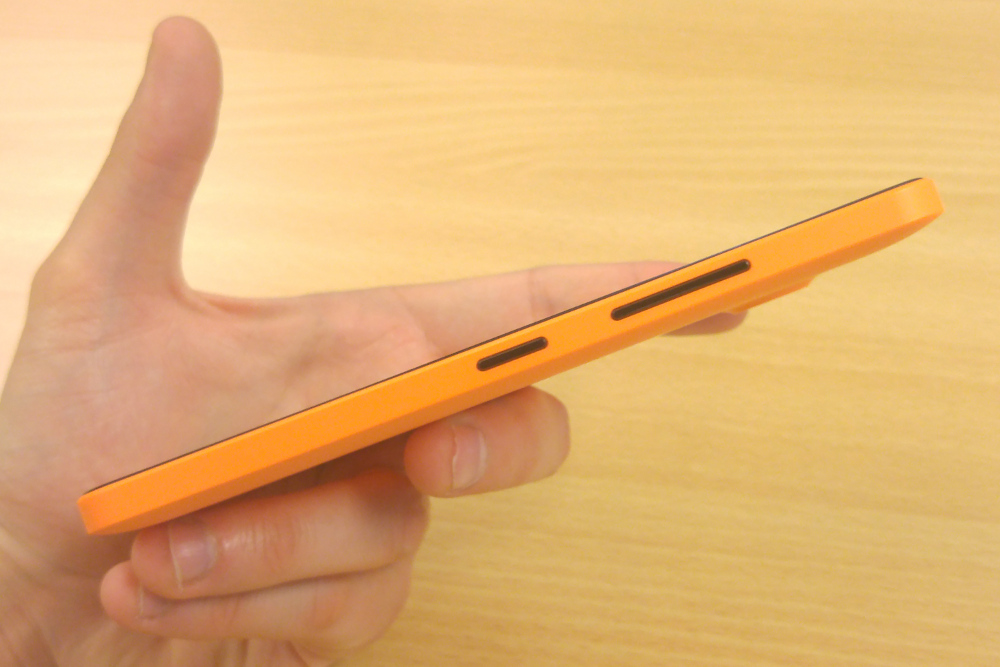
It's nippy in terms of firing them up too, with rarely more than a couple of seconds load time. Navigating menus and settings is also slick and responsive.
Where the 640 LX does fall down is 3D gaming. The Adreno 305 GPU doesn't cope as well as it could with intensive graphics, and trying to play something as demanding as Asphalt 8 results in a sub-par framerate and hints of lag.
The vast majority of games shouldn't be any kind of problem, and standard commuter fare such as Candy Crush Saga or Angry Birds will work just fine.
Lumia 640 XL: features
Microsoft has included an option to expand the 640 XL's storage up to 128GB via MicroSD, and it's a good thing too, as the phone only comes with a measly 8GB of onboard storage.
We'd imagine that this is partly to keep the cost down and partly to encourage greater use of its OneDrive cloud storage platform. Whatever the reason, it's an annoying limitation for those who don't habitually use cloud storage services.
Microsoft has paid attention to enterprise users' demand for increased mobile security, and the Lumia 640 XL is equipped with a range of features to safeguard the device's integrity. These consist of both enterprise-grade and consumer-level features, including data encryption, mobile VPN anonymising and remote backup, lock and wipe.
It comes in both single and dual-SIM variants as well, handy for those travelling between offices in different regions, with a further choice between 3G and 4G capability.
Lumia 640 XL: camera
On the whole, the Lumia range has a good track record with cameras. The 640 XL lives up to this tradition, sporting a good snapper for a budget phone. Pictures are crisp and detailed, and colours aren't as muted as other cameras we've seen at this price point.
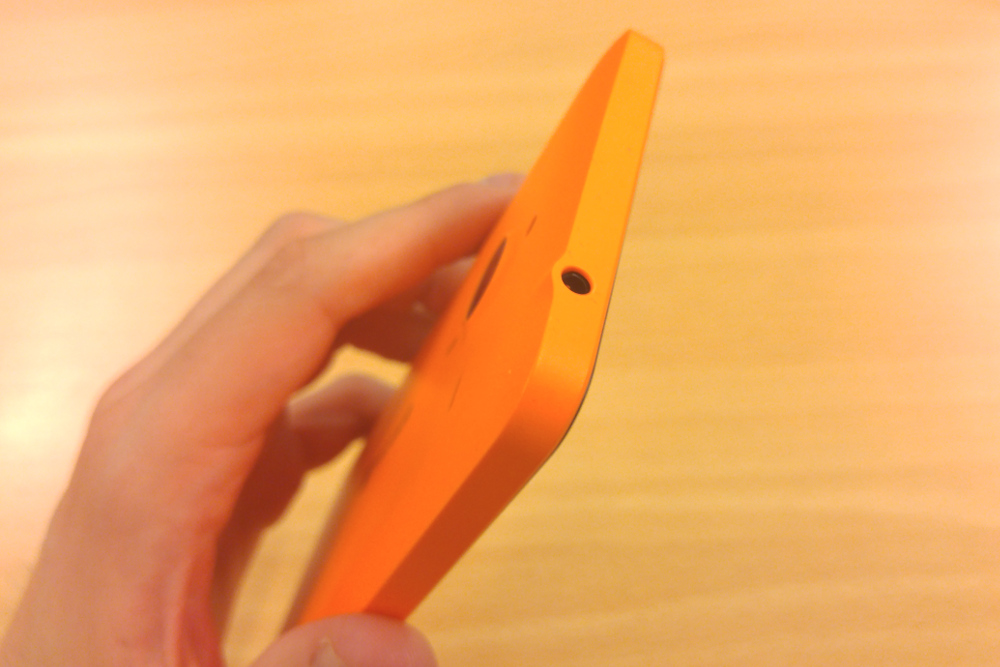
It has a problem with dynamic range, as images with a high level of contrast between light and dark don't show up that well, and white balance can be off in places.
The front-facing selfie camera isn't as good as the rear lens. Video-calling sessions shouldn't be too fuzzy, but it doesn't take the best quality snaps, and finer details are likely to be lost.
Overall though, it's better than many cheap smartphone cameras, and will do good justice to the average amateur photographer's pictures. Just make sure you're not expecting professional-grade results.
Lumia 640 XL: battery
The Lumia 640 Xl is packing a 3000mAh battery, which provides a respectable amount of juice. We found it lasted around a day and a half, especially if you don't over-tax the battery.
In our HD video playback test, the 640 Xl lost its charge at a rate of around nine per cent per hour. That's not quite as efficient as some we've seen, but it's not altogether bad. Despite the lower resolution, the 640 Xl is still pushing a hefty amount of pixels round the screen, and it did well considering.
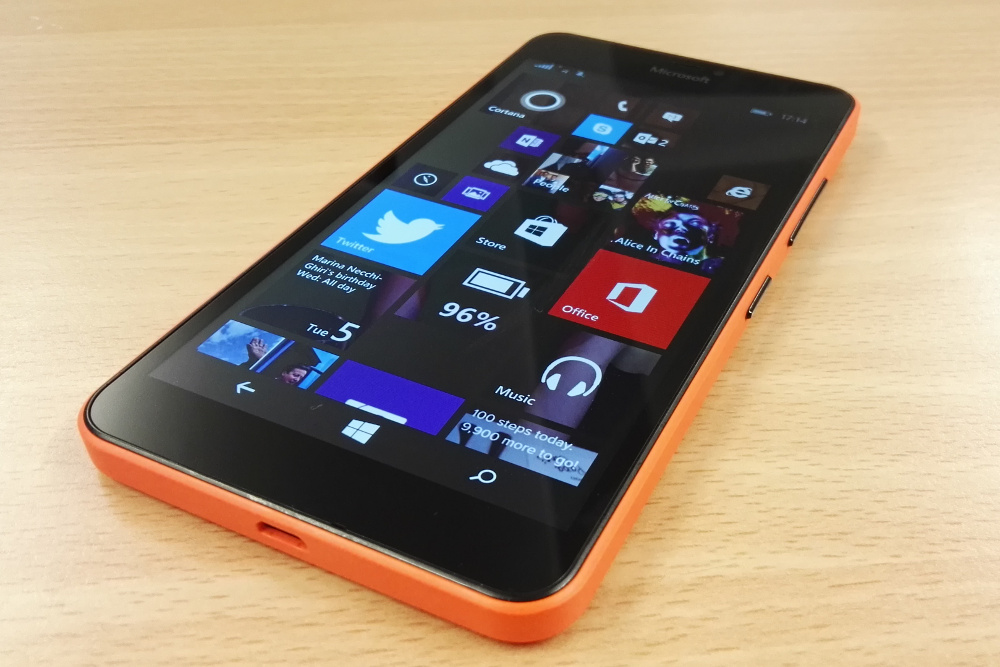
It also includes a standard battery-saving mode, which will cut off a few functions in order to squeeze some more juice out of the device. With this up its sleeve as well, you can rest assured that you won't constantly be hunting for a plug socket.
Lumia 640 XL: price
Microsoft has been eminently sensible with its pricing, and is selling the Lumia 640 XL for the reasonable sum of 219. This puts it squarely in the budget category, a price band that has been largely bereft of quality, business-oriented devices thus far.
It's a bit of a steal, frankly, especially if you include the added extras such as the Office 365 membership and OneDrive allowance. You can pick up older Android flagships such as the Nexus 5 or Samsung Galaxy S4 for around the same price, but while they might technically be a bit better, the Lumia 640 has some real benefits for business users.
Lumia 640 XL: connectivity
As a business device, we'd hoped that the 640 XL would have more in the way of advanced connectivity. Sadly, it's only outfitted with a basic array, including the usual suspects of Bluetooth 4.0, single-band .11 b/g/n WiFi and 4G.
We would have liked to see dual-band WiFi and NFC in particular, but considering the budget price-point, we're prepared to let it slide.
Lumia 640 XL: verdict
The Lumia 640 is a fantastic business smartphone at a knockdown price. The screen won't blow anyone away, and high-powered gaming might be a bit of a struggle, but otherwise, it'll sail through both professional and personal use with ease.
It could get even better, too. Microsoft is touting features to make the 'Windows 10 experience' flow seamlessly across all your devices, and if it can deliver, then Windows phones such as the Lumia 640 XL might become genuine contenders.
We would recommend getting the near-identical - but much more sensibly proportioned - Lumia 640, which can be had for 100 cheaper. If you're dead-set on having a comically-oversized screen, however, the 640 XL is everything you need. Microsoft has polished the essentials up to rather impressive standard, and at a remarkably low price.
Verdict
For business users, the Lumia 640 XL is a fantastic smartphone. It has outstanding integration with the Office app family, a brace of features geared towards enterprise use, will be part of the eventual Windows Phone 10 rollout, and to top it all off, it's set at a pleasingly inexpensive price.
Processor: Qualcomm Snapdragon 400 quad-care 1.2Ghz CPU
Display: 5.7in 720p ClearBlack IPS display
Memory: 1GB
Storage: 8GB expandable
Battery: 3000mAh
Connectivity: 802.11b/g/n, 4G, Bluetooth 4.0
Dimensions: 158 x 81.5 x 9 mm
Weight: 171g
Adam Shepherd has been a technology journalist since 2015, covering everything from cloud storage and security, to smartphones and servers. Over the course of his career, he’s seen the spread of 5G, the growing ubiquity of wireless devices, and the start of the connected revolution. He’s also been to more trade shows and technology conferences than he cares to count.
Adam is an avid follower of the latest hardware innovations, and he is never happier than when tinkering with complex network configurations, or exploring a new Linux distro. He was also previously a co-host on the ITPro Podcast, where he was often found ranting about his love of strange gadgets, his disdain for Windows Mobile, and everything in between.
You can find Adam tweeting about enterprise technology (or more often bad jokes) @AdamShepherUK.
-
 Gender diversity improvements could be the key to tackling the UK's AI skills shortage
Gender diversity improvements could be the key to tackling the UK's AI skills shortageNews Encouraging more women to pursue tech careers could plug huge gaps in the AI workforce
By Ross Kelly Published
-
 Researchers claim Salt Typhoon masterminds learned their trade at Cisco Network Academy
Researchers claim Salt Typhoon masterminds learned their trade at Cisco Network AcademyNews The Salt Typhoon hacker group has targeted telecoms operators and US National Guard networks in recent years
By Emma Woollacott Published
-
 HPE says unified channel strategy won't force Juniper partners to generalize
HPE says unified channel strategy won't force Juniper partners to generalizeNews Does the company embrace specialists or want a full portfolio push? The answer, it seems, is both
By Jane McCallion Published
